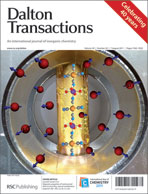LiCoO2 concaved cuboctahedra with a size of about 1.0 μm were hydrothermally prepared from CoCO3 and LiOH·H2O at 150 °C. Field-emitting scanning electron microscope (FESEM) images show that the cuboctahedra consisted of four hexagonal plates, with angles of 70.5° in neighboring plates. Electron diffraction (ED) patterns of the hexagonal plates show 1 0 0 diffraction of LiCoO2 in rhombohedral phase and 2 2 0 diffraction in spinel phase, which means LiCoO2 concaved cuboctahedra are comprised of two intergrown phases. The electrochemical performance of these concaved cuboctahedra of LiCoO2 at a rate of 0.5 C demonstrated first run charge/discharge capacities of 155 and 141 mAh g−1 and a stable discharge capacity of 114 mAh g−1 after 100 cycles. After that, FESEM images show the LiCoO2 concaved cuboctahedra have undergone no significant change. At a temperature of 120 °C and under the same conditions, only a small amount of LiCoO2 concaved cuboctahedron appeared. As the temperature rose to 180 °C, flower-like LiCoO2 microstructures with a size of about 1.0 μm were formed, constructed of irregular plates. The electrochemical performance of the products prepared at 120 °C and 180 °C indicates lower stability than that of LiCoO2 concaved cuboctahedra.

You have access to this article
 Please wait while we load your content...
Something went wrong. Try again?
Please wait while we load your content...
Something went wrong. Try again?


 Please wait while we load your content...
Please wait while we load your content...